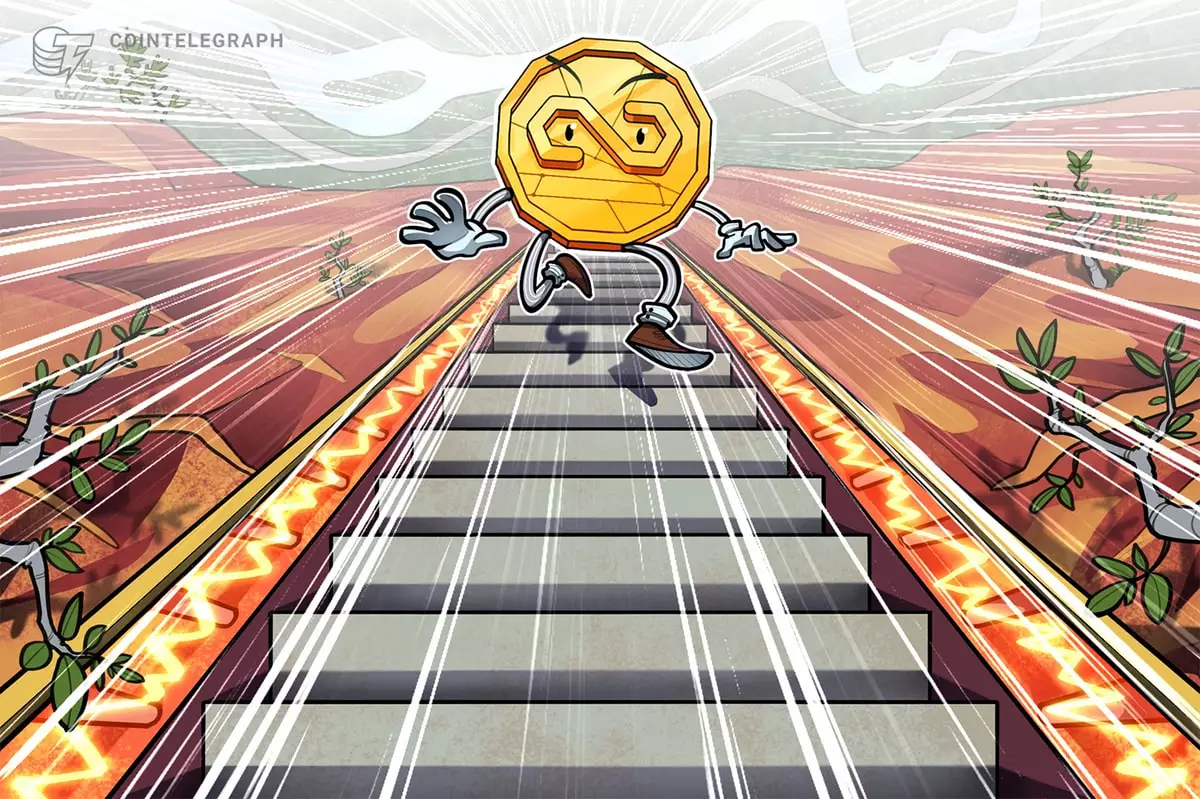Extending its presence in the decentralized finance (DeFi) industry, Tangible protocol launched the real estate-backed stablecoin USDR. However, the recent events have revealed vulnerabilities in the stability of the coin’s peg to the U.S. dollar. A rush of redemptions led to a drain of liquid assets, including Dai (DAI), from USDR’s treasury. As a result, panic selling ensued and the value of USDR plummeted. This article delves into the challenges faced by USDR and the project team’s commitment to finding solutions to this liquidity issue.
The USDR stablecoin, backed both by cryptocurrencies and real-estate holdings, predominantly operates on the Pearl decentralized exchange (DEX) built on Polygon. On October 11, Tangible protocol announced via a tweet that the USDR treasury experienced a rapid redemption of all its liquid DAI funds. Consequently, this triggered a significant drawdown in the market cap of USDR, causing it to lose its peg to the U.S. dollar. The sudden flood of selling activity led to the coin’s value crashing to $0.5040 per coin before recovering slightly to around $0.53.
Despite the considerable loss in value, the developers behind the USDR stablecoin are determined to overcome the liquidity issue and restore stability. They emphasized that the real estate and digital assets that underpin USDR still exist and will be used to support redemptions. Recognizing the temporary challenges in redeeming the stablecoin, the team remains committed to finding solutions and ensuring the coin’s long-term viability. It is worth noting that the project’s official website states that the value of the assets still exceeds the entire market cap of the coin.
A breakdown of USDR’s collateral reveals that Tangible (TNGBL) tokens, an integral part of the coin’s ecosystem, account for 14.74% of the collateral. The remaining 85.26% is backed by real-world housing and an “insurance fund.” This diverse collateral composition aims to provide stability and asset-backed value to USDR. Despite the recent challenges, the project team is confident in the overall resilience of the stablecoin.
Stablecoins, by their design, are intended to maintain a stable value of $1 on the open market. However, extreme market conditions can sometimes cause these stablecoins to deviate from their peg. For instance, Circle’s USDC experienced a temporary loss of its peg during the bankruptcy of several U.S. banks in March, but it quickly regained its stability. On the other hand, Terra’s UST stablecoin lost its peg in May and has yet to recover, currently valued at $0.01 per coin as of October 11. These examples highlight the challenges associated with achieving and maintaining stability in the volatile cryptocurrency market.
The recent redemption rush and subsequent liquidity issues have exerted significant pressure on the USDR stablecoin, resulting in a loss of its peg to the U.S. dollar. However, Tangible protocol’s project team remains undeterred and committed to finding solutions. With a diverse collateral composition and the assurance of real-world assets and insurance funds, USDR aims to restore stability and redeemability. As the DeFi industry continues to evolve, the resilience and adaptability of stablecoins like USDR will be crucial in maintaining trust and broader adoption.


Leave a Reply